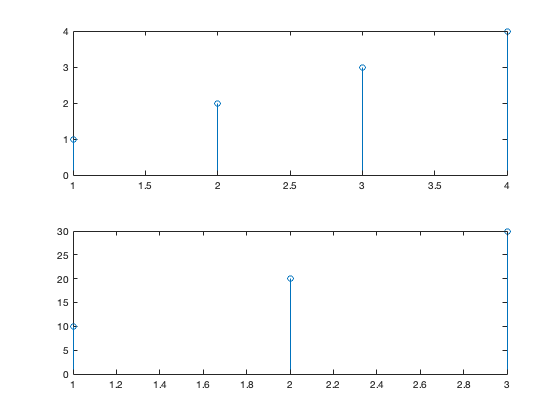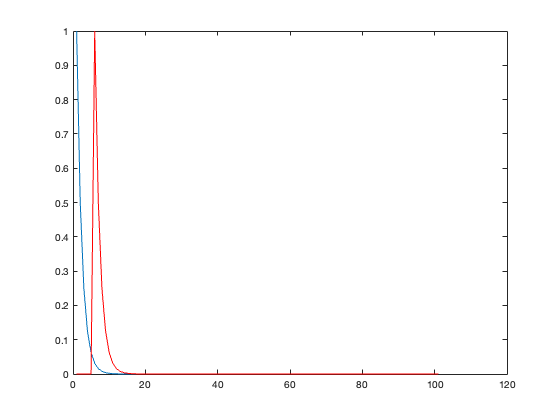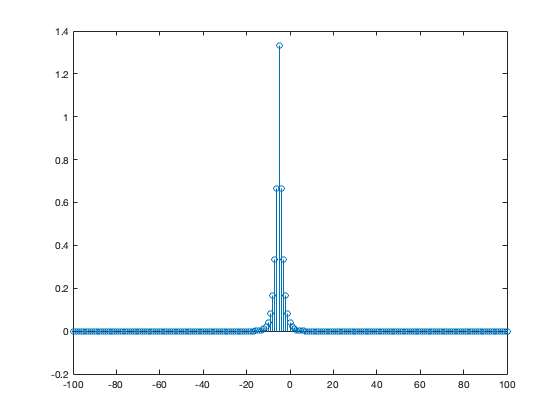Contents
Convolution Demo
a = [1 2 3 4];
b = [10 20 30];
figure(1)
clf
subplot(2,1,1)
stem(a)
subplot(2,1,2)
stem(b)
c = conv(a,b)
figure(2)
clf
stem(c)
A = rand(3);
B = rand(4);
Cfull = conv2(A,B)
Csame = conv2(A,B,'same')
A = zeros(10);
A(3:7,3:7) = ones(5);
figure(3)
mesh(A)
u = [1 0 -1]';
v = [1 2 1];
Ch = conv2(u,v,A);
figure(4)
mesh(Ch)
Cv = conv2(v,u,A);
figure(5)
mesh(Cv)
c =
10 40 100 160 170 120
Cfull =
0.3385 0.9611 1.3067 1.0723 0.5843 0.2634
0.4803 1.2465 2.0005 1.7586 1.4703 0.5546
0.8451 1.7992 2.4580 2.8452 2.1226 0.9366
0.9242 0.9729 2.3392 1.8331 2.1825 1.1621
0.4131 0.5061 1.4741 0.7881 1.3500 0.7462
0.3538 0.2067 0.4962 0.7152 0.1573 0.6391
Csame =
2.4580 2.8452 2.1226
2.3392 1.8331 2.1825
1.4741 0.7881 1.3500





Correlation Demo
n = 0:100;
x = 0.5.^n;
y = circshift(x,5);
figure(6)
plot(x)
hold on
plot(y,'r')
[c,lags] = xcorr(x,y);
figure(7)
stem(lags,c)
w1 = randn(100,1);
w2 = randn(100,1);
[c,lags] = xcorr(w1,w2);
figure(8)
stem(lags,c)
w1 = randn(100,1);
[c,lags] = xcorr(w1,w1);
figure(9)
stem(lags,c)
figure(10)
plot(conv(w1,w1(end:-1:1)))














